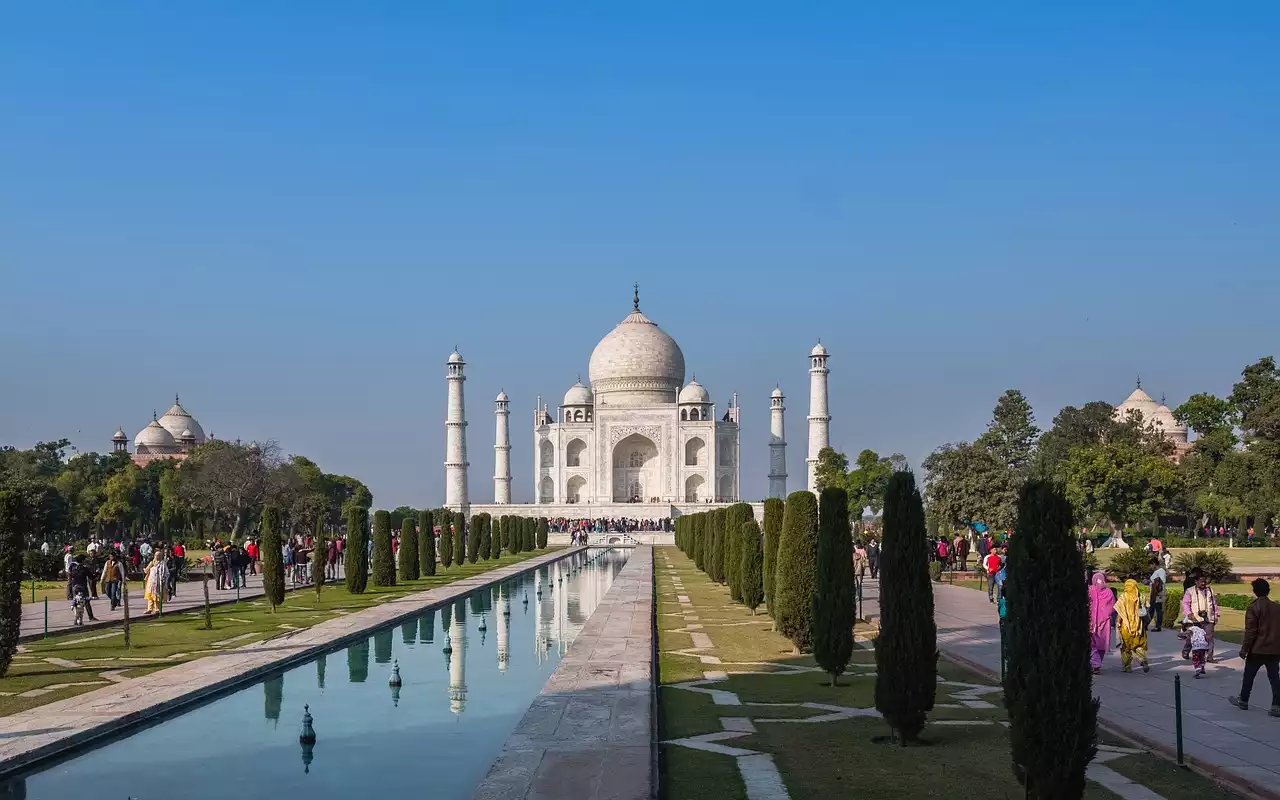The Taj Mahal is one of the most famous and beautiful buildings in the world. It is a mausoleum built by Mughal emperor Shah Jahan as a final resting place for his wife, Mumtaz Mahal. The Taj Mahal is located in the city of Agra, India. It was completed in 1653 and has been listed as one of the New Seven Wonders of the World since 2007. Immediately after its completion, this architectural marvel was recognized as one of the most remarkable buildings ever constructed anywhere in the world. Its red sandstone walls, white marble dome, and green Slate Ivy columns are its main features that attract millions of tourists from different parts of the world every year. If you want to know more about this beautiful structure, read on for some interesting facts about it.
The name ‘Taj Mahal’
The Taj Mahal is a white marble mausoleum built in Agra by Mughal emperor Shah Jahan as a final resting place for his third wife, Mumtaz Mahal. The name ‘Taj Mahal’ translates to ‘Crown Palace’ in Persian. Some people mistakenly believe that the Taj Mahal is white because it is made of white marble. However, it is white because of its construction materials, the same materials that give it its beautiful silver sheen. The first recorded name of the Taj Mahal as ‘Dar-i-ar-Afsh’ (‘House of the Endowment’) suggests that its original purpose was as a garden house, rather than an ornate tomb. This indicates that the building was intended to be a future endowment to the people of Agra. It may also be a reference to its future use as a garden pavilion.
For over three centuries, the Taj Mahal has been known as ‘the Taj’. It is not even mentioned by name in Shah Jahan’s inscription or in the court chronicles of the time. The first written mention of the building as ‘the Taj’ comes from the mid-19th century. Historians believe that the name ‘the Taj’ probably evolved from ‘the Tajmahal’, a corruption of the original name. The British Raj may have been responsible for this change. ‘Tajmahal’ translates to ‘crown of palaces’ in Persian; therefore, the Raj may have felt that ‘Taj Mahal’ was too grandiose a name for a mausoleum.
Interesting facts about the Taj Mahal
- The Taj Mahal was the world's most expensive building in terms of cost per cubic meter at the time of its construction.
- The Taj Mahal took 22 years to build. During that time, 22,000 laborers worked full-time. Additionally, about 500 designers, architects, and engineers worked on the construction.
- The Taj Mahal was constructed with materials from all over the world: white marble from Italy, turquoise from Tibet, and jasper from Turkey.
- The Taj Mahal's semi-translucent white marble is a rare variety found only in the Indian state of Rajasthan.
- The construction of the Taj Mahal was completed in under five years when the average time for constructing such a building was around 15-20 years. - The Taj Mahal was built by Afghan workers under the supervision of a Persian architect.
- The cost of building the Taj Mahal was more than $2 billion in today’s currency.
The cultural significance of the Taj Mahal
The Taj Mahal was built by Shah Jahan as a mausoleum for his third wife Mumtaz Mahal. Mumtaz died during childbirth while she was in her 40s. She had been very important in the life of Shah Jahan and his kingdom. She was his trusted friend and advisor, as well as his wife. She had been a part of the royal family since she was a child when she was betrothed to the son of the previous Mughal emperor. Later, she was married to Shah Jahan, who became emperor after his father’s death. The Taj Mahal is a mausoleum built by Mughal emperor Shah Jahan as a final resting place for his wife, Mumtaz Mahal.
The architecture of the Taj Mahal
The Taj Mahal is a symmetrical building with an octagonal dome in the center. It is entirely made of white marble, including its ornate interior and exterior decorations. The tomb is surrounded by four gardens. The gardens are connected by a long reflecting pool that runs from the northern end to the southern end. The eastern and western ends of the garden are flanked by gardens with fountains. The building is constructed in the shape of a parallelogram, with each side measuring 90 meters. The main entrance is through the eastern side. The other three sides have false doors that are purely ornamental. The walls are decorated with semi-precious stones and inlaid with precious and semi-precious stones. The dome of the central chamber is decorated with a mosaic of turquoise, lapis lazuli, and crystal pieces.
How Many Visitors?
The number of visitors to the Taj Mahal was over eight million in the year 2010. Then it was decided that the number of visitors to the Taj Mahal should be limited. The number of visitors allowed at the Taj Mahal is now controlled through a ticketing system. It is estimated that around six million people visit the Taj Mahal every year.


 How Laser Hair Removal Can Help Women With PCOS
How Laser Hair Removal Can Help Women With PCOS
 Exploring the Rich History and Culture of Crete
Exploring the Rich History and Culture of Crete The Best Greek Island for First-Time Visitors
The Best Greek Island for First-Time Visitors The Statue of Liberty in New York Harbor
The Statue of Liberty in New York Harbor The Palace of Versailles in Versailles - France
The Palace of Versailles in Versailles - France The Empire State Building in New York - United States
The Empire State Building in New York - United States The Eiffel Tower is The Pride of France
The Eiffel Tower is The Pride of France